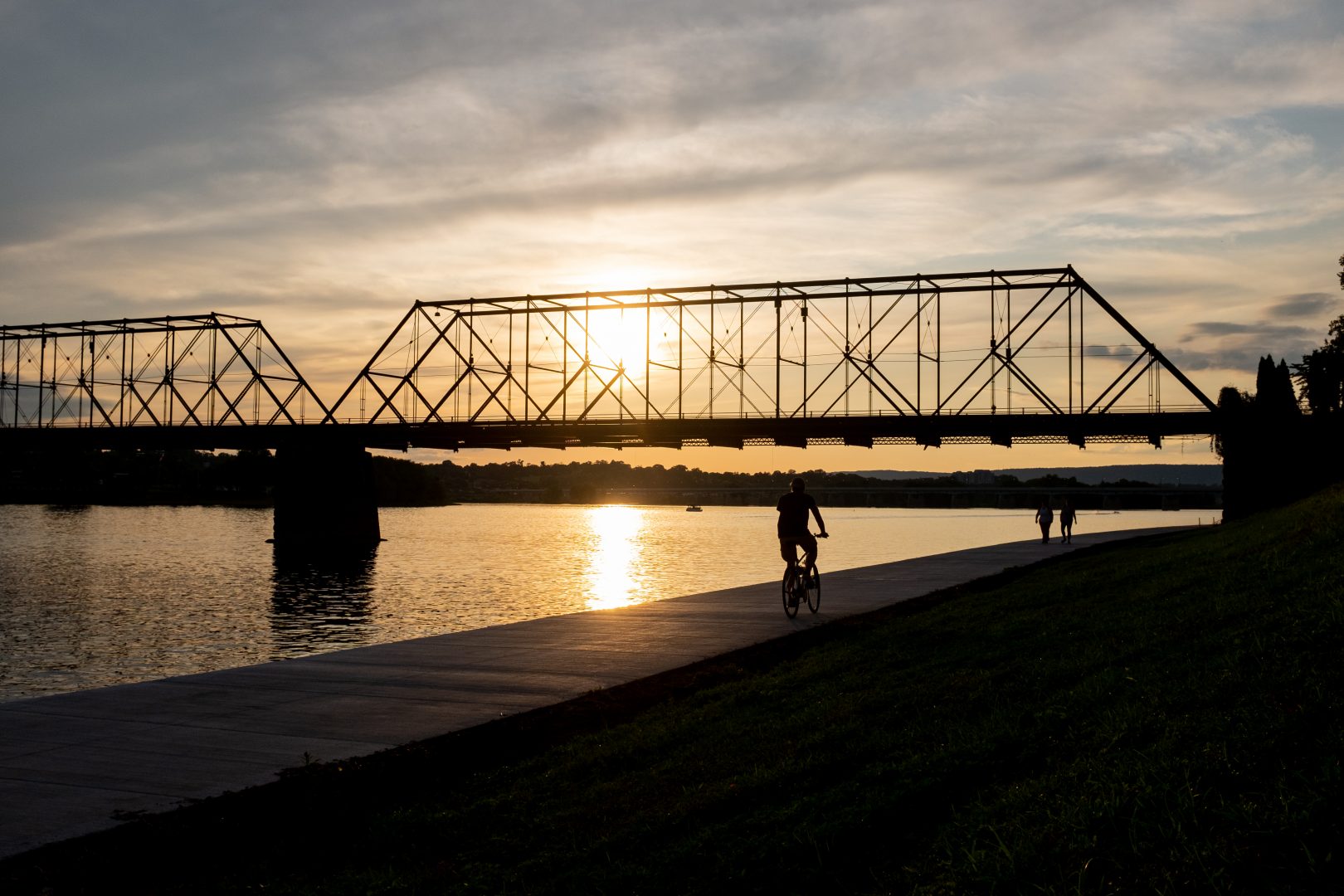
A bicyclist and pedestrians travel next to the Susquehanna River in Harrisburg on Aug. 19, 2019.
Ian Sterling for WITF


A bicyclist and pedestrians travel next to the Susquehanna River in Harrisburg on Aug. 19, 2019.
Ian Sterling for WITF

Ian Sterling for WITF
A bicyclist and pedestrians travel next to the Susquehanna River in Harrisburg on Aug. 19, 2019.
Penn State researchers and a team of volunteers have found chemicals from household products that harm wildlife in the Susquehanna River.
Lead scientist Katie Hayden plans to publish recommendations for products people can use that don’t have the harmful chemicals, which are called endocrine-disrupting compounds.
They can be found in cleaning products, toiletries, plastics, and other sources. They affect hormones and can impact human health, though this study is focused on natural waterways, where the compounds are more likely to affect animals.
So far, the researchers have found that the most common compounds in the river align with the ingredients of cleaning products and toiletries in people’s homes.
Hayden said that the amount of endocrine-disrupting compounds in river water is too small to affect human health.
“They’re found at very, very small concentrations in the environment,” she said, “like a teaspoon in an Olympic sized swimming pool.”
The compounds get into river water after cleaners, cosmetics, and other household products are washed off surfaces. The initial use could cause a range of health problems in humans, which is why some endocrine-disrupting compounds are on the EPA’s Contaminant Candidate List, a registry for chemicals the agency says need to be tested for their effect on human health.
In natural waterways, the compounds can hurt aquatic animals like smallmouth bass. Exposure to them can impair reproduction and cause deformities in fish and frogs.
Sixty volunteers called “citizen scientists” used an online tool called the EDC Footprint to measure the number of products containing endocrine-disrupting compounds in their homes. The most common products used were glass cleaner, laundry detergent, and air freshener.
The volunteers next took water collection kits to streams in the Susquehanna River basin. They sampled at 59 sites in counties ranging from Lackawanna in northeast Pennsylvania, to Clearfield just outside State College, to Lancaster. Hayden’s analysis of those water samples showed that the most common endocrine-disrupting compounds were parabens, which are a type of preservative used in cosmetics, followed by fragrances.
“The compounds that showed up most in people’s footprints also tended to show up the most in the surface water sample,” said primary investigator Dr. Heather Preisendanz of Penn State. She said she was glad that volunteers were able to connect the products in their homes to the contaminants in their streams.
“It’s definitely changed how I think about things,” said Lettice Brown, one of the volunteers. She said that after contributing to the study, she reduced her use of body wash, shampoo, and laundry soap. She said that others should consider their own household use, because “when it’s leaving our households through our drains and things like that, it doesn’t totally go away.”
Hayden said that water sampling for the project will continue, though this year’s sampling efforts will be delayed by COVID-19.
StateImpact Pennsylvania is a collaboration among WITF, WHYY, and the Allegheny Front. Reporters Reid Frazier, Rachel McDevitt and Susan Phillips cover the commonwealth’s energy economy. Read their reports on this site, and hear them on public radio stations across Pennsylvania.
(listed by story count)
StateImpact Pennsylvania is a collaboration among WITF, WHYY, and the Allegheny Front. Reporters Reid Frazier, Rachel McDevitt and Susan Phillips cover the commonwealth’s energy economy. Read their reports on this site, and hear them on public radio stations across Pennsylvania.
Climate Solutions, a collaboration of news organizations, educational institutions and a theater company, uses engagement, education and storytelling to help central Pennsylvanians toward climate change literacy, resilience and adaptation. Our work will amplify how people are finding solutions to the challenges presented by a warming world.